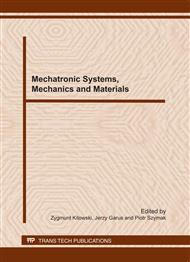[1]
J. Kacprzyk, Multistage fuzzy control, WNT, Warsaw 2001 ( in Polish).
Google Scholar
[2]
J. Lisowski, M. Mohamed-Seghir, The Safe Ship Control with Minimum Risk of Collision, Wit Press Comp. Mech. Publ., Boston 1998.
Google Scholar
[3]
J. Lisowski, Mathematical modeling of a safe ship optima control process, Polish Journal of Environmental studies, 14 (I), 68, 2005.
Google Scholar
[4]
M. Mohamed-Seghir, Selected methods for solving the problem of safe ship control in collision situations in fuzzy environment, Gdynia Maritime University Publisher, 2007 ( in Polish).
Google Scholar
[5]
M. Mohamed-Seghir, The optimal safe ship trajectory in fuzzy environment, XIII International Scientific-Technical Conference, Gdynia 2002 ( in Polish).
Google Scholar
[6]
M. Mohamed-Seghir, Methods based on fuzzy sets to solve problems of Safe Ship control, Novel Algorithms and Techniques in Telecommunications and Networking, USA Springer 2010, pp.373-377. USA, Springer (2010)
DOI: 10.1007/978-90-481-3662-9_64
Google Scholar
[7]
R. Śmierzchalski, Synthesis methods and algorithms for assist the navigator in decision making in collision situations at sea. Theses high school in Gdynia Maritime, Gdynia 1998 ( in Polish).
Google Scholar
[8]
T. Zeng X., Zhang, Automatic collision-avoidance system for ship navigation using genetic algorithms, IEEE Transaction On Control Systems Technology 2003.
Google Scholar
[9]
B. Żak, Selected problems of synthesis of anti-collision system for ship motion control, Gdynia Naval Academy Publisher, Gdynia 2001 ( in Polish).
Google Scholar


